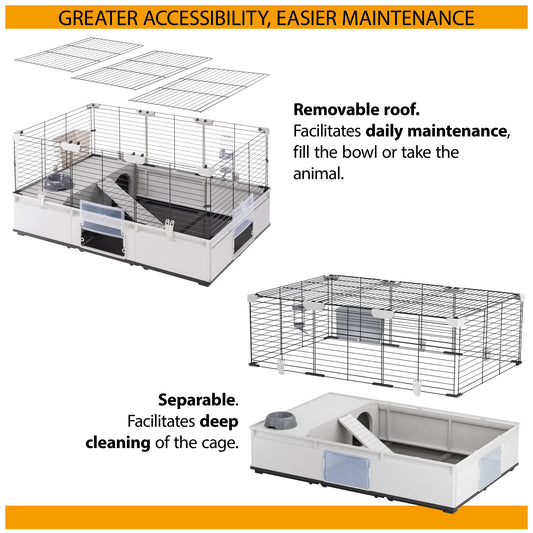Cats are very subtle communicators but do ‘speak’ using a combination of noises and body language. If you learn what your cat is trying to say, it can improve the relationship between you. For example, cats can sometimes find too much handling stressful so by observing their body language you can tell if they are enjoying the attention, simply tolerating it, or have had enough and are about to swipe!
What To Look For in a Happy Cat
If you know that your cat is happy you can relax knowing that all is well, but what are the signs of contentment? Look for the following:
- Relaxed body posture
- An upright tail, sometimes curved at the tip
- Half-closed relaxed eyes that blink slowly
- Ears in a natural position
- Closed mouth
- Relaxed whiskers
- Rolling on the back - this is a sign of greeting and trust
While most people associate purring with a content cat, it's actually a self-soothing mechanism that can also be used to calm them when they're stressed too. Though purring on it's own may not be an indicator of a happy cat, if they're displaying some of the signs above too then you've got one pleased pussy-cat!
A Sad Cat
Cats are sensitive to change and can become depressed by what may seem like small changes to us, such as their litter tray being moved or being given a new collar, as well as bigger upsets like illness or grief. The body language signs to look out for here are:
- Sleeping more than usual
- Ears forward but drooping
- Eyes open and downcast
- Drooping whiskers
- Not interested in activities they normally enjoy
An Anxious Cat
Cats can get anxious or stressed just like their owners, and it is not always obviously apparent what it causing it. Common causes for worry in cats are not having easy access to food, water or litter trays (a particular problem in multi-cat households), changes to the look or smell of their home environment, or boredom (a particular problem with indoors-only cats). The body language signs to look out for here are:
- Low body posture/crouching and staying close to the ground. Trying to hide
- Muscles tense
- Whiskers pointed forwards
- Tail tucked tightly into body
- Ears held flat against the head
- Eyes wide with dilated pupils
A Threatened Cat
Cats that feel threatened will communicate this through their body language. This could be caused by other cats in disputes over territory or unwanted attention from humans. The body language signs to look out for here are:
- Low posture with body flattened or arched back
- Hair standing up on their back and tail
- Tail curved around body
- Ears flat to the head and drawn back
- Eyes wide and pupils dilated
- Mouth open and tense with teeth showing
An Aggressive Cat
This is a cat that is trying to make themselves look bigger and more intimidating, ready for a fight. If you notice any of this body language in a cat, do not attempt to touch them – you could find yourself on the receiving end of a nasty bite or scratch!
- Stiff body posture with stiff, straight legs
- Tail stiff and low or held straight down
- A direct stare
- Stiff ears held flat against the head
- Stiff whiskers held away from their face
- Fur on the back and tail raised
- Pupils constricted
- Vocalising – growling or howling
Right to Reply
You are able to communicate with your cat in the same way using your own body language. If your cat is comfortable and relaxed in your presence, try giving them a slow blink while tilting your head slightly to the side. If your cat is enjoying your company, they may give you a slow blink in return.
You should never stare at a cat as this is perceived as being a threat to them and they might react in an unfriendly way through fear.
Shop All Cat
If you found this article interesting, why not check out:









